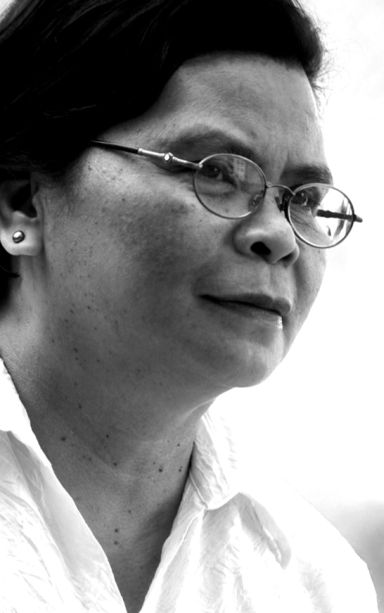Suggested activities in teaching Martial Law

DELA CERNA
Last week I had an interview with a history teacher who is doing a research on student activism in Cebu, and I shared with her my experiences of educating for social consciousness and transformation even before martial law was declared. Specifically, it was in 1970 when a group of social studies teachers met at St. Theresa’s College to discuss the issues of the day and ways to develop social consciousness by critiquing certain events in the country at that time.
At that time, I was teaching literature and composition, not history or social studies. There is a misconception that teaching Martial Law should be done only by social studies teachers in the elementary and secondary levels, and history teachers in the case of the tertiary level. In fact, Martial Law should be integrated in all subjects. From my experience, I realized that literature is as powerful as history in teaching social consciousness (including Martial Law). A combination of literature and history proved a perfect combination and this was when I moved to UP Cebu High School in mid-1970’s and stayed on till 2010.
It was also in 1975 when the three social studies teachers of UP Cebu High School, namely Alfredo Montaño, Sofia Aliño and yours truly organized CASSE (Cebu Association of Social Studies Teachers) which met every last Saturday of the month to tackle content and strategy in teaching social studies. Among the topics tackled were problem solving which includes identification of the problem, gathering data and making hypothesis; teaching critical thinking using the events of the day; interpretation of data (using data provided by IBON and other reliable sources); teaching of current events past and present; analyzing editorials, political cartoons in the national dailies; values education especially the politics of values education.
Quiz Bowls were very effective and encouraged students to read if organized properly and with caution such as preparing questions that are challenging but very factual.
With literature and history, the arts especially the performing arts were just perfect and most relevant at the time when technology was not that advanced yet. After finishing my MA in Asian Studies, I taught Creative Dramatics in addition to teaching Composition and Asian History to the third and fourth year. Integrating Creative Dramatics in their activity in the Science and Technology Week Look-Alike Scientist contest in September 1983 led the senior Asian History class to produce in a well-written and well-performed Dula Tula form a parallelism of the lives and times of Galileo and Ninoy Aquino who was just assassinated.
The same class would begin the holding of a culminating activity in Asian History in February (after their Play Production contest in the Pilipino classes). Dubbed Asian Festival, the activity was a one-week activity with the senior students organized into committees to come up with an exhibit, demonstrations, quizzes, symposia, and a fashion show of Asian attire (original and inspired) and concluded with a protest song contest. Developing the talents of students was another purpose of the activity. To cite an example, Class ’86 successfully presented “Nukleyar” of PETA to dramatize the protest against the nuclear plants in the country. The Asian Festival extended till 1989 since Asian History was moved down to the second-year level and was replaced by World History per instruction of UP Visayas in Iloilo which was then the central administration.
With World History, the culminating activity was continued but the content was worldwide. In the event of the Gulf War, high school class ’91 came up with “Peace Perspectives,” a concert for peace, still a protest song contest and with the collaboration of the Fine Arts students who gladly lent their paintings to provide the whole backdrop of then the Multipurpose Hall.
Asian History was the content of the Fourth Year High School Social Studies from 1979 to 1989 as a result of the follow up study of the graduates of UP High from 1975 to 1978. For the thesis writing in the third year level which I handled from 1979 to 1992, topics on current issues were encouraged.
At present, when history teachers ask me how to teach Martial Law, I share what I did. All these activities need planning before the school year starts, organizing skills in coordination with other teachers and most specially organizing students in planning and implementing activities. Build a strong network outside of your institution. Do not hesitate to invite resource persons to your class. Don’t stay too long in the classroom. There’s so much to explore with your students.
* * *
An interesting art exhibit will open on October 10, 2017 (Tuesday) at 6:00 p.m. at the Manila Art Frames and Gallery. Dubbed “Art Biography,” it is a reunion of two old friends, painter Jose (Kimsoy) Yap Jr., and sculptor Arsenio (Arsing) Abella. Manila Art Frames and Gallery is at 5 e Benedicto St., Cebu City. Exhibit runs from October 10 to October 31, 2017. Gallery hours are from 10 a.m. to 6 p.m., Tuesday to Sunday.
Disclaimer: The comments uploaded on this site do not necessarily represent or reflect the views of management and owner of Cebudailynews. We reserve the right to exclude comments that we deem to be inconsistent with our editorial standards.
